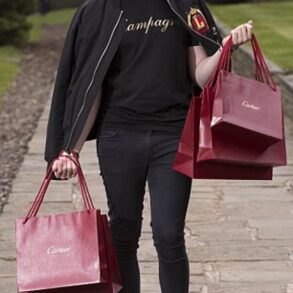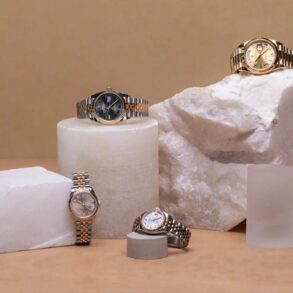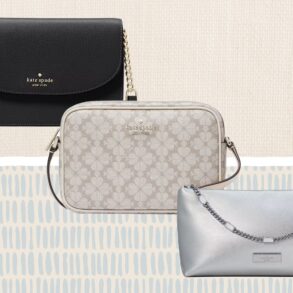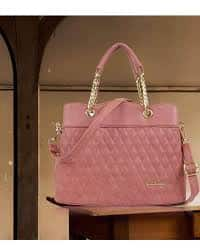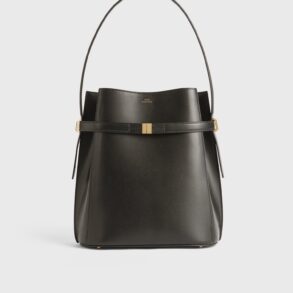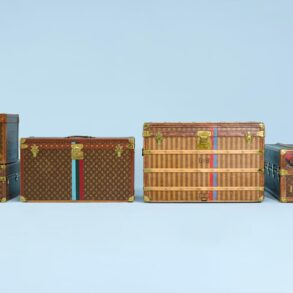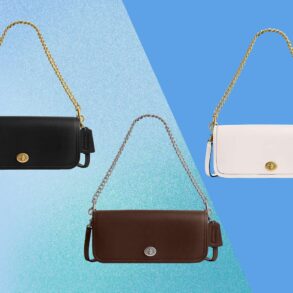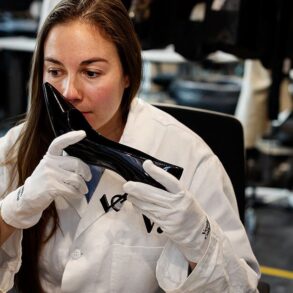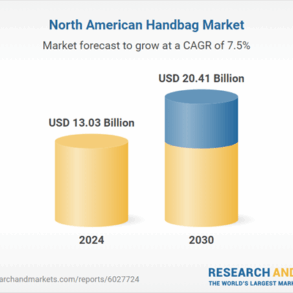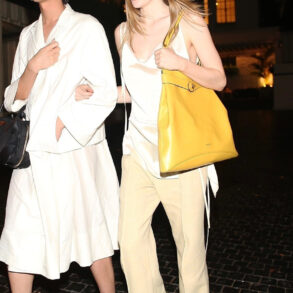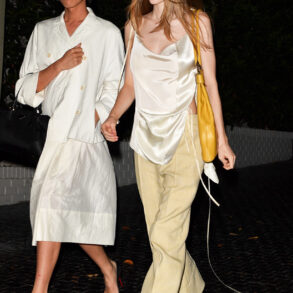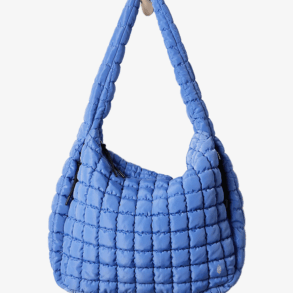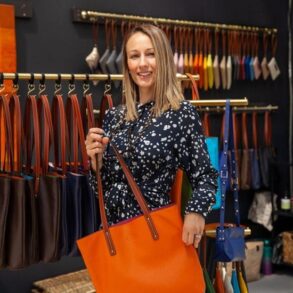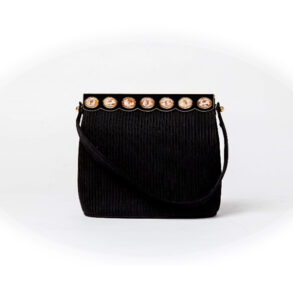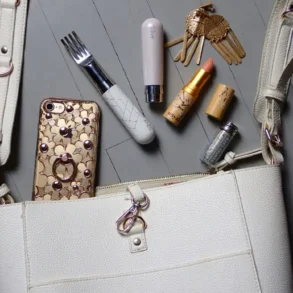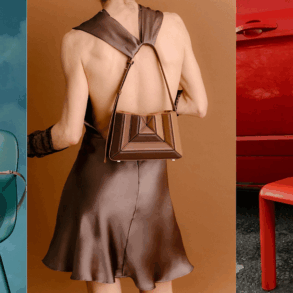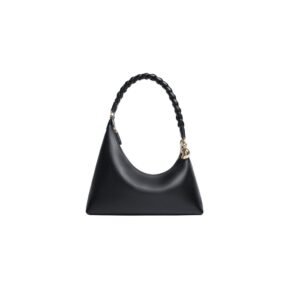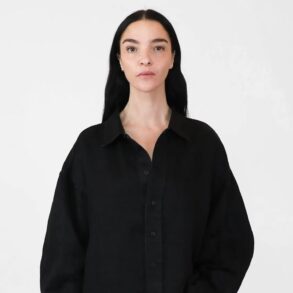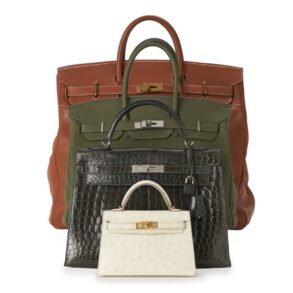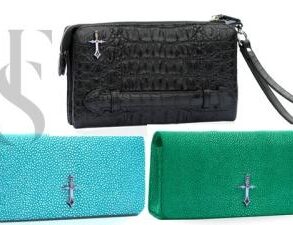Coach CEO Todd Kahn sported a stylish jacket on stage during the Consumer Electronics Show in Las Vegas. Gen Phoenix Chief Marketing Officer Elyse Winer stepped out in a pair of Coach loafers. The two executives were there Jan. 9 to let attendees know that their fashion choices were not any ordinary leather, but waste leather.
Kahn and Winer want to flaunt a vision of efforts they hope will help to popularize “circular” leather.
Coach plans to buy 40 million square feet of recycled leather fiber from startup Gen Phoenix over the next three years. That’s a noteworthy amount. For example, the bag maker’s parent company, Tapestry, used 105 million square feet of leather in its three brands, including Kate Spade and Stuart Weitzman, in fiscal year 2024.
Gen Phoenix’s latest material is slated to appear in Coach Classic handbags later this year. Although the new fibers will debut in outer trim panels and components, the news brings “circular” leather, made from production scrap, into the mainstream accessories and apparel market. Previously, alternative leathers, explored by Gucci, Tory Burch, Stella McCartney and other brands, have remained in gee-whiz pilot projects or limited collections.
Gen Phoenix since 2007 has been transforming “wet blue” leather scraps from beef production into a new material that it has sold to 250 airlines for seating. Its product reduces emissions by at least 80 percent, compared with the global average of traditional leather, according to the Peterborough, England, company.
“What’s so powerful about what Gen Phoenix is doing is it’s literally taking the waste of ‘the blues’ and turning it into new material that would otherwise end up in landfills,” CEO Kahn told Trellis.
The two companies have partnered closely since March 2023, when Tapestry joined an $18 million investment in the startup, led by Material Impact, with Dr. Martens and Jaguar LandRover’s InMotion Ventures. Less than a year later, Gen Phoenix’s ELeather appeared in the linings of bags sold by the Coachtopia sub-brand.
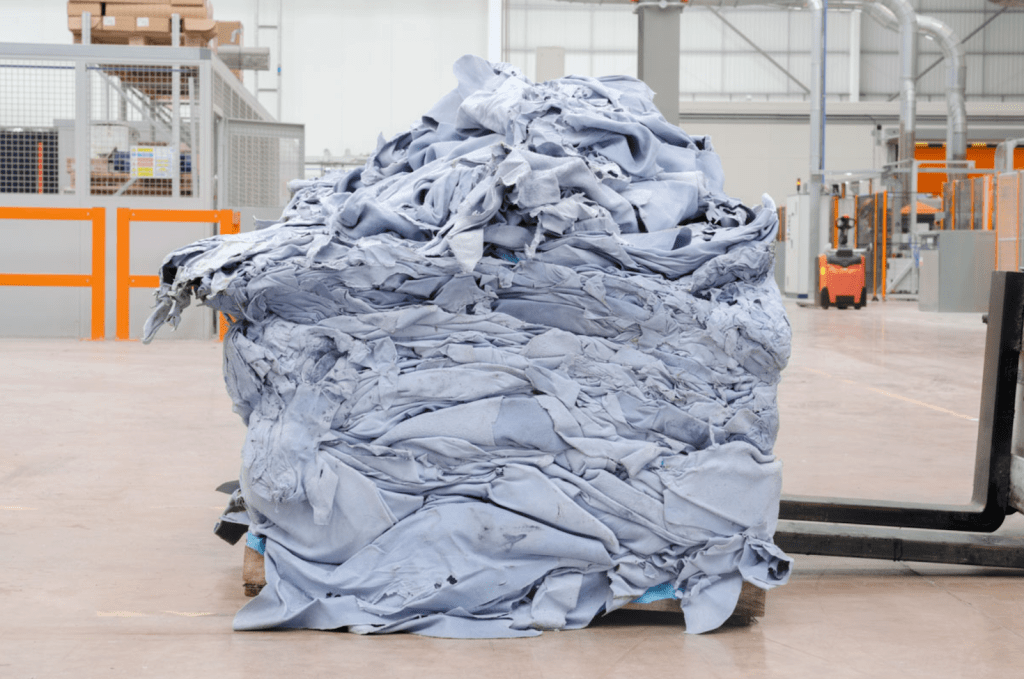
All about the materials
Lowering the emissions footprint of materials is a top sustainability priority for Coach, whose $5 billion in sales in fiscal 2024 made up the majority of Tapestry’s overall $6.7 billion. Ninety-eight percent of Tapestry’s climate emissions come from Scope 3 sources. Fifty-nine percent of those greenhouse gases derive from purchased goods and services.
“Materials manufacturing becomes so integral to our larger science-based targets efforts,” said Tapestry Vice President of ESG Strategy Logan Duran. “And with leather being our most impactful material, it becomes a really exciting and interesting opportunity for us to make a pretty big dent in our overall emissions.”
Manhattan-based Tapestry strives to reach net-zero greenhouse gas emissions by 2050 “across the value chain,” a goal validated by the Science-based Targets Initiative (SBTi).
Circular leather and next-gen emissions
So called “next-generation” materials, including those that repurpose waste, could help meet nearly 40 percent of the emissions cuts the apparel industry needs to decarbonize, according to the Apparel Impact Institute and Fashion for Good. Unlike the array of futuristic “leathers” made from fungus, invasive species or pineapples, however, Gen Phoenix’s product originates in the highly polluting factory farm industry.
Gen Phoenix takes in “wet blue” hides in bundles of hundreds. The pale blue color comes from chromium sulfate, used in the tanning process, which prevents leather from drying out into a jerky-like texture. (The company also takes smaller shreds and strings of leather waste from tanneries.) Gen Phoenix grinds up the material into tiny scraps, then mills that until it becomes fluffy. Next, the fibers lie on something like a tissue sheet. A “hydro-entanglement” process sprays jets of water onto the layers of leather fibers and fabric, leading to a unified material. The company later processes that to resemble full grain leather.
“We’re taking that existing waste, which is carbon that has already been accounted for,” Duran said. “And so when we talk about the inputs right now, what’s exciting is that we’re taking an existing waste product from a byproduct, which is already readily available to use to create this material.”
Gen Phoenix uses up to 77 percent recycled content, and the full material can include recycled or virgin plastic. However, it is exploring bio-based or other recycled materials, including for its thin polyurethane coatings.
The company maintains that vegan leather mimics “are still producing more ‘stuff” — whereas it is repurposing industrial waste. Gen Phoenix and Coach tout reclaimed leather for exemplifying the circular economy’s premise to keep products and materials in use at their highest value.
Teamwork by Coach and Gen Phoenix
Tapestry and the leather recycler have collaborated closely to refine the startup’s material.
“This is not your traditional supplier-brand relationship,” said Elyse Winter, chief marketing officer at Gen Phoenix. “We have this product that we know could stand up to performance because of the years in these really tough environments of 24/7 use in seating applications. But elevating it so that it could take on the luxurious properties of a full grain leather product, that’s where we really needed Coach’s expertise.”
Experts from Coach labored on a monthly basis in Gen Phoenix’s factories with the startup’s product developers, material scientists and engineers, she said. Challenges included getting the material to achieve some of the draping, hand feel, and grain textures characteristic of fine leather.
‘Virtuous’ materials?
Not everyone is sold on the sustainability of animal leather.
“Using the recycled leather (from manufacturing scrap) is virtuous and a step in the right direction for waste management, but I’m not so sure about the carbon emission reduction,” said Marcian Lee, research analyst at Lux Research. “After all, leather is a by-product of cattle farming, and whether we consume the leather or not, we’re still going to rear a whole cow — and that’s a lot of GHG.”
Livestock produce nearly 15 percent of the world’s greenhouse gas emissions, according to the UN Food and Agriculture Organization.
However, Coach’s sustainability playbook also incudes work for which Lee advocated, including to produce durable goods as well as ensure reuse, repair and refurbishment systems. The company’s strategy to prioritize the circular economy tenets of reuse and repair is more than an appeal to Gen Z consumer but also a corporate imperative, according to Kahn.

How Tapestry structures sustainability
Duran leads sustainability at Tapestry, reporting to the chief supply chain officer, who reports to the C-suite. Sustainability oversight lies at the board level so it’s not a “bolt-on” effort, he said. Tapestry aims to create consistent measurements and policy guidance to help its brands including Coach, which has its own structure, he added.
“When you ask the question, who’s responsible for sustainability, I would have at the Coach brand myself and our creative director [Stuart Vevers],” Kahn said. “If we don’t create stylish products the consumer wants, all of the table setting doesn’t do anything.” That’s why Coach’s creative team launched Coachtopia, he added.
“I think we have a duty,” Kahn said. “What we know is the younger generations recognize that corporations have a responsibility to do better. That’s a given.”
“We don’t have everything figured out. We talk a lot about undoing perfectionism … But we have to start the journey, and we have to get the insight.”
Coach appeared among the top 10 brands on Kearney’s 2024 Circular Fashion Index in July and was the only luxury name alongside Gucci. Coach’s circular economy efforts include:
- Launching Coachtopia in 2023, exploring products that avoid virgin materials. The sub-store has taken a skunkworks approach to create products like the Checkerboard “upcrafted” leather bag, using production offcuts.
- Operating the Re(Loved) repair program since 2021. In 2023 it fixed 63,000 products and gave 11,000 goods a second life.
- Embracing the cult following of vintage Coach bags. Many retain significant resale value decades after the original sale.
- Becoming a network partner with the circular economy-leading Ellen MacArthur Foundation in 2023.
- Training 140 employees on “Circularity 101” practices.
- Awarding students a Circular Design Scholarship through the Coach Foundation.
Coach’s work with Gen Phoenix furthers ongoing attempts by Tapestry to improve the environmental footprint of its leather:
- In 2023 Tapestry reached a target two years early for 90 percent of its leather to come from tanneries rated Silver and Gold by the sustainability-focused Leather Working Group.
- Tapestry also reached 1 percent of leather from regenerative, recycled or “next-gen” sources, toward a goal of 10 percent for 2030.
- Tapestry has worked on leather traceability initiatives, including a 2023 pilot that traced the origins of shoe leather, and a UN blockchain pilot.
This post was originally published on this site be sure to check out more of their content.



